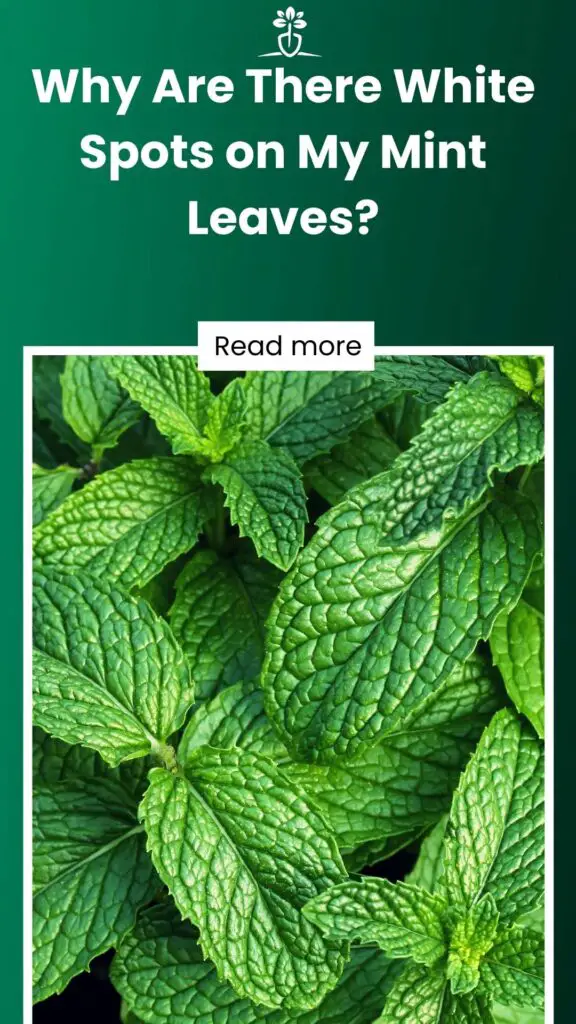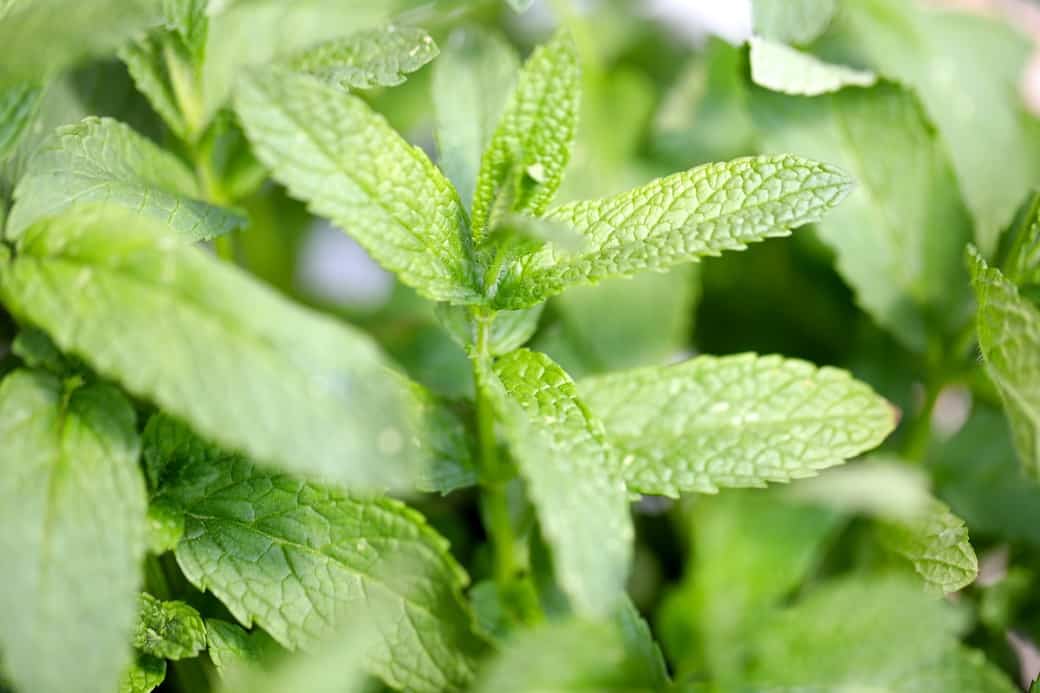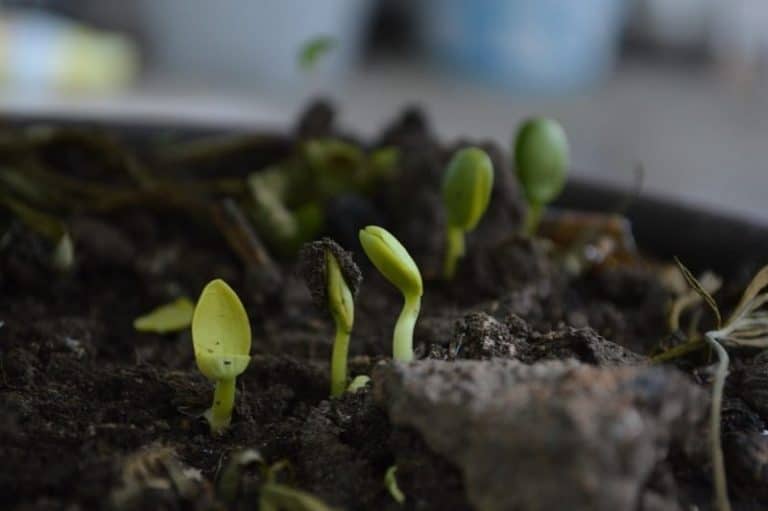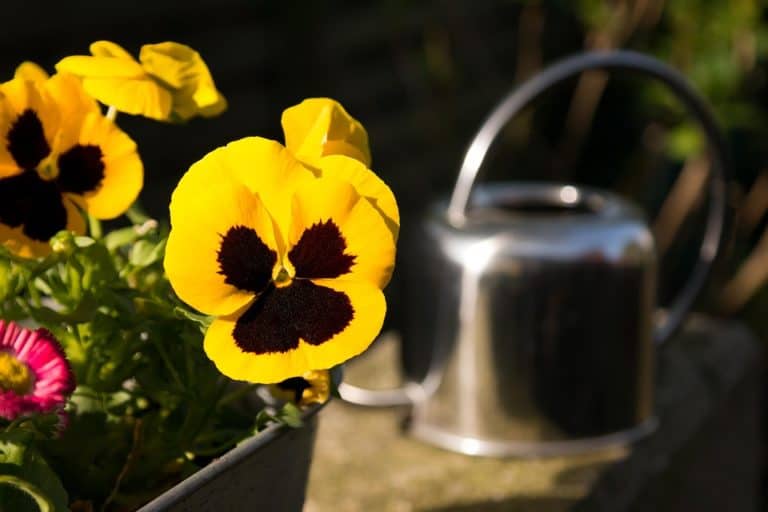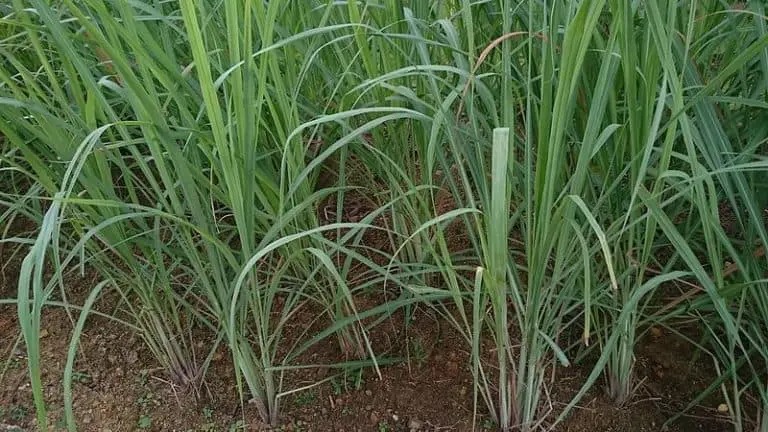Why Are There White Spots on My Mint Leaves?
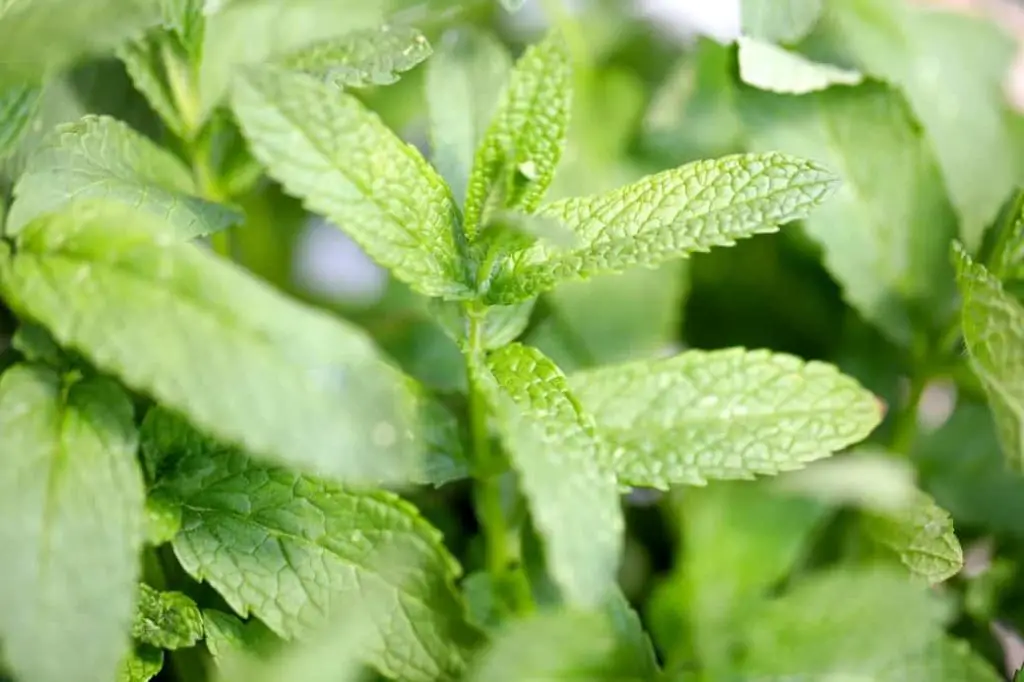
Just like animals, plants tell us when something’s not right. See white specks on mint leaves? Taking action fast matters. Discover why those tiny dots appear today.
Contents
What are the causes of white spots?
There are different reasons why your mint leaves may develop white spots. One of these reasons is powdery mildew. You can tell it’s powdery mildew when the circular spots look like someone sprinkled flour on your leaves. The only difference is that the whiteness won’t go away with a simple brush against the leaves. In most cases, these white spots will appear on the upper side of the mint leaf. These spots will also not be bundled together.
Fungus
Powdery mildew is a by-product of a biotrophic fungus. It may not be easy to notice them at first because it takes a while for the spores to germinate. But once it starts, you’ll see the spots appear and grow with time. The earlier you get rid of these spots, the better. Suppose it’s the one affecting your mint leaves; you should avoid consuming it. Instead, you can use common fungicides to get rid of the problem. Try using the most trusted brands for the best results.
Insects
Spider mites may be another reason why your mint leaves have white spots. You’ll know its spider mites when the white spots are tiny and are in a cluster. Unlike the spots caused by powdery mildew, these will appear under the mint leaves, making it quite a challenge to identify. You are most likely to find the mites hiding along the veins of the mint leaves. The more the mites, the more the white spots.
Spider mites thrive during the warm, humid season. So, it would be in your best interest to focus on prevention during such a season instead of waiting until they strike. We will take a look at how to prevent as well as get rid of spider mites shortly. Now, let’s move on to the next cause of white spots on mint leaves.
Thrips are tiny, parasitic insects known for their love for mint leaves. Unfortunately, they don’t just stop sat feeding on the plant. These white or sometimes yellow insects promote viral growth in mint leaves. And if unchecked, the viruses can end up affecting the entire mint tree. That’s what makes it essential to identify and eliminate the tiny pests before it’s too late.
Thrips feed on the leaf sap and tissue as they depend on the nutrients for sustenance. They’ll also lay their eggs inside the mint leaves, degrading them further. As a result of their unwelcome stay, your mint leaves will gradually turn from dark green to having slivery patches (or streaks). So, that’s how you’ll tell your mint leaves are infested with thrips.
Sometimes the thrips can make the edges of your mint leaves turn bronze. So, be sure to check that out as well. Thankfully, insecticides can eliminate thrips with ease. Make sure you are using the right amount of dosage to eliminate the pests without harming your mint leaves.
Some of the insecticides you might want to use include: EcoGarden Organic Pesticide, and BioAdvanced 701810A Systemic Plant Fertilizer and Insecticide with Imidacloprid. Feel free to try out as many insecticides as you can. That’s until you find one that works best for you. You can search for them in amazon.com and have the delivered to your doorstep at the address of your choosing.
How do I prevent white spots from forming on my mint leaves?
I guess you’ve heard of the proverb ‘prevention is better than cure.’ So, it would be in your best interest to focus on preventing the white spots than getting rid of them. One way of doing it is by getting rid of the sick mint plant. Whenever you leave an infested mint plant with the rest, then the chances are that they will all be affected. So, best to get rid of the sick one in a bid to save the rest. But that’s not enough, unfortunately.
One of the easiest ways of preventing white spots is by spraying your plants with lots of water. Thrips and spider mints aren’t very fond of water, especially in the form of strong jets. Spraying your mint plans with water will wash away any pests, and they’ll think twice about coming back, that’s if they survive. The only precaution you have to take when spraying is that mint plants are a bit delicate. So, be careful not to harm them.
Besides using water, you can opt for traditional insecticides. If the toxins in most insecticides turn you off, then I would suggest insecticidal soaps. Neem oil soap is effective against both spider mites and thrips. It’s also non-toxic to both humans and their pets, making it among the best options available. Your neem oil can either be sprayed or applied using a soft piece of microfiber cloth. Again, be gentle during the application for obvious reasons.
Apart from getting your remedies from your nearest convenience store, you can make your own from the comfort of your home. One such homemade treatment is a mixture of mouthwash, vinegar, and baking soda. You can mix those with water and spray gently on the surface of your mint leaves. If you do this effectively, then your mint leaves will be free of powdery mildew in a matter of days.
Why are the white spots on my mint leaves increasing?
There will be cases when the white spots increase despite your valiant efforts to get rid of them. The latter can only mean two things; one, that you aren’t doing it well enough. Two, maybe the pests have found a way to around the “eviction notice.” So, you might want to intensify your spraying, making sure that you’re spraying every inch of the plant before moving on to the next one and repeating the entire process.
Another thing you can do is reexamine the white spots. The chances are that you might have a wrong diagnosis and are therefore trying to get rid of pests when the problem has a fungus origin. If the use of pesticides or fungicides isn’t your forte, then it might be time you sought outside assistance.
Finally, you might want to check the environment. Sometimes the pests usually find innovative hiding places to sit out the treatment, only to come back a few days later. That’s why it is important to spray your mint leaves regularly in addition to finding a better place that promotes your plant’s survival chances.
Is it safe to consume mint leaves that have white spots?
It’s never safe to consume mint leaves that have white spots in most cases. For instance, when the cause is a fungus, then chances are the fungus will harm your health shortly after consumption. However, when the reason for the white spots is pest-related, then you might consume the leaves. But still, doing so is not advisable.
A final word
Always make sure you are learning new ways of taking care of your mint leaves. If you do that correctly, you’ll enjoy the benefits of using fresh, healthy leaves and have an easier time keeping the white spots at bay. If your mint leaves get infected, and you have no idea how to treat them, then you might want to seek advice from a professional. But, it’s cheaper to conduct personal research and learn how to do it yourself.
